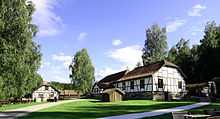Benjamin Wegner
| Benjamin Wegner | |
|---|---|
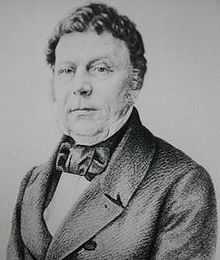 | |
| Born |
Jacob Benjamin Wegner February 21, 1795 Königsberg |
| Died |
May 22, 1864 (aged 69) Bygdøy, Oslo |
| Residence |
|
| Citizenship | |
| Known for | Industrialist, estate owner and timber merchant; Hanseatic and Portuguese consul-general |
| Spouse(s) | Henriette née Seyler (1805–1875) |
| Relatives |
|
| Signature |
 |
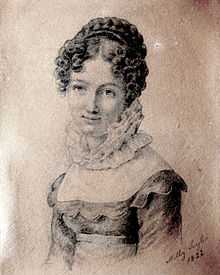
Jacob Benjamin Wegner (21 February 1795 – 22 May 1864) was a Norwegian industrialist, estate owner and timber merchant.[1]
Born in Königsberg, he moved to Berlin around 1820 and established an independent business as an agent in the British timber trade and grain trade. In 1822, he relocated to Norway, after he had bought Blaafarveværket on behalf of the Berlin banker Wilhelm Christian Benecke. From 1822 to 1849, he was Director General and one of two owners of Blaafarveværket, which he developed into Norway's largest and most successful industrial enterprise in the first half of the 19th century. He was also owner of Frogner Manor, the largest co-owner of the Hafslund estate, a co-owner of the Hassel Iron Works and a co-owner of the timber firm Juel, Wegner & Co. Most of his business activities, both in the timber, grain and cobalt segments, focused heavily on export to England.
He served as consul general to Norway of Hamburg, Lübeck and Bremen, at the time sovereign city states, and of the Kingdom of Portugal. He was married to Henriette Seyler (1805–75), a member of the Berenberg banking dynasty of Hamburg and a daughter of Berenberg Bank's long-time senior partner L.E. Seyler as well as a granddaughter of one of the 18th century's greatest theatre principals, Abel Seyler.
Early life
Jacob Benjamin Wegner was born in Königsberg in East Prussia. Relatively little is known about his background. His mother remarried to ship-owner and ship-builder from Königsberg Benjamin Gutzeit. He may have had a brother named Salomon. He received a solid commercial education and joined a leading Königsberg firm as an apprentice.
Around 1820, he moved to Berlin where he established an independent business as an agent in the British timber trade and grain trade, i.e. in large-scale export of timber and grain from the Baltic region, bought from German and Polish estate owners, to England. He was an agent and close associate of the London firm Isaac Solly and Sons and of the Berlin firm Gebrüder Benecke and its head Wilhelm Christian Benecke, and spent much time in London. On behalf of his close friend and business associate Edward Solly, he also negotiated the agreement to sell 677 paintings—mainly Italian Trecento and Quattrocento paintings and Early Netherlandish paintings—from Solly's collection to the Prussian state in 1821, which formed an important basis of the new Gemäldegalerie.
Industrialist in Norway
Blaafarveværket
In 1821, Modums Blaafarveværk in Norway, the world's leading producer of cobalt blue, was announced for sale. The former royal company had been pledged by the king as security for a loan during the Napoleonic Wars and taken over by the bankruptcy estate of the Swedish businessman Peter Wilhelm Berg when the state could not redeem the pledge. Edward Solly wanted to buy the company and send Wegner as his representative to complete the transaction, but as he had financial problems, the plans had to be canceled. However, in 1822, Wegner was sent by his business associate Wilhelm Christian Benecke to evaluate the profitability of the enterprise and with authorization to buy the company on Benecke's behalf if he found the company to be profitable. Wegner subsequently bought the company at a public auction on behalf of an investment group of which Benecke was the prime investor.
Wegner was appointed the new Director-General of Modums Blaafarveværk and became a co-owner, and he relocated to Norway, where he initially lived on the Fossum Manor near Modums Blaafarveværk. Upon taking up residence in Norway, he automatically became a Norwegian citizen. From 1826, Benecke and Wegner were the sole owners of Modums Blaafarveværk. Under their ownership, the company became the largest in Norway, employing as much as 2,000 people, and was the dominant cobalt blue producer worldwide, producing as much as 80% of the world's cobalt pigment for use in the porcelain, glass and paper industries around the world. The main export market was England and the company's largest customer by far was the London firm Smith, Goodhall & Reeves.
In its heyday, Blaafarveværket generated an annual income of around 10,000 Norwegian speciedaler for Wegner, partially as dividend and partially as tantième (in comparison, a well salaried, experienced miner at Blaafarveværket earned around 70 speciedaler annually, the chief engineer earned 250 and Wegner's immediate subordinate, the director of the mines, earned around 1,100).[2]
As a consequence of the economic crisis following the revolutions of 1848 and also of the invention of the synthetic ultramarine colour, Modums Blaafarveværk went bankrupt in 1849.[3][4]
Other enterprises and activities
Together with Benecke, Wegner owned the Hassel Iron Works from 1835 to 1854, each with half of the shares. He was also a co-owner, eventually the largest co-owner, of the major estate Hafslund with large forests in eastern Norway and the country's largest sawmill, from 1835 to 1864. His co-owners included Benecke and Herman Wedel Jarlsberg, and subsequently Thorvald Meyer and Westye Egeberg. In 1856, he co-founded the timber firm Juel, Wegner & Co. with Iver Albert Juel.
In 1836, he bought Frogner Manor, where he lived with his family until 1849. The family then sold Frogner Manor and moved to Christiania (now the inner city). Wegner however retained a part of the Frogner property, Frognerseteren with a part of the Nordmarka forests, until his death. Frogner Manor is today best known as the site of Frogner Park.
-
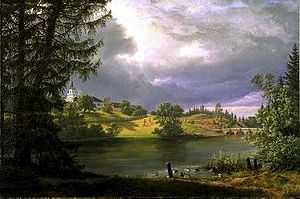
Frogner Manor (1842), painted by J.C. Dahl for Benjamin Wegner. The painting was formerly in the possession of the von Hosstrup family in Hamburg.
-
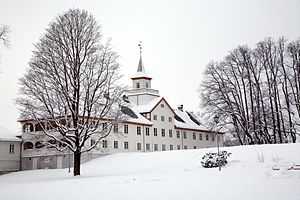
Frogner Manor today
Wegner was also the Consul-General to Norway of the northern German city-states of Hamburg, Lübeck and Bremen, as well as the Kingdom of Portugal. He died at his country home, Dronninghavn, at Ladegaardsøen (Bygdøy), in 1864.
Family
-

Henriette Seyler's father, the Hamburg banker Ludwig Erdwin Seyler
-

Henriette Seyler's paternal grandfather, the famous theatre director Abel Seyler
-

Henriette Seyler's maternal grandfather, the Hamburg banker Johann Hinrich Gossler
-

Henriette Seyler's maternal grandmother, the Hamburg banker Elisabeth Berenberg
On 15 May 1824, Benjamin Wegner married Henriette Seyler (1805–1875) in St. Nicholas' Church, Hamburg. She was a member of the Berenberg-Gossler-Seyler banking dynasty of Hamburg, one of the city's most prominent Hanseatic families, and was the daughter of the banker Ludwig Erdwin Seyler (1758–1836) and Anna Henriette Gossler (1771–1836). Her father was a co-owner of Joh. Berenberg, Gossler & Co. (Berenberg Bank), President of the Commerz-Deputation, and a member of the Hamburg Parliament, and she was a granddaughter of the Swiss-born merchant turned theatre director Abel Seyler and Sophie Elisabeth Andreae from Hanover on her father's side and of the Hamburg bankers Johann Hinrich Gossler and Elisabeth Berenberg on her mother's side.[5] Through her paternal grandfather, she was also descended from the Burckhardt, Merian, Faesch, Socin and Meyer zum Pfeil patrician families of Basel, and through her mother from families such as Amsinck and Welser. Henriette Seyler was a niece of Hamburg senator and banker Johann Heinrich Gossler II and a first cousin of Hamburg First Mayor Hermann Gossler (1802–1877).
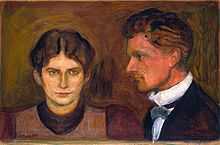
Benjamin and Henriette Wegner had four sons and two daughters, all of whom were born in Norway, where they have many notable descendants.
- Johann Ludwig Wegner (1830–1893) was a judge (byfogd), and married Blanca Bretteville, a daughter of Prime Minister Christian Zetlitz Bretteville.
- Heinrich Benjamin Wegner (1833–1911) was a timber merchant and married Henriette Vibe, a daughter of classical philologist Ludvig Vibe.
- Egmont Frithjof Wegner (b. 1835) died as a child.
- Elisabeth Sophie Dorothea Henriette Wegner (1838-1906) married colonel and aide-de-camp to king Charles, Hans Jacob Nørregaard.
- Anna Henriette Wegner (1841–1918) married theologian Bernhard Cathrinus Pauss, the owner of Nissen's Girls' School.
- George Mygind Wegner (1847–1881) was a Supreme Court advocate and unmarried. He was named for the former British consul in Christiania and family friend George Mygind (died 1844).
Benjamin Wegner was the grandfather of the lawyer and Chief of Police Jacob Benjamin Wegner (1868–1949), of the humanitarian and women's rights leader Olga Wegner (the wife of the Chief Justice of the Supreme Court Karenus Kristofer Thinn), of the internationally noted war correspondent Benjamin Wegner Nørregaard, of the noted lawyer, President of the Norwegian Bar Association and founder of the law firm Hjort Harald Nørregaard, of the wine merchant and consul in Tarragona Ludvig Paul Rudolf Nørregaard, of the surgeon and President of the Norwegian Red Cross Nikolai Nissen Paus, of the lawyer and Director at the Norwegian Employers' Confederation George Wegner Paus and of the engineer and hydropower executive Augustin Thoresen Paus.
References
- ↑ Wegner, Rolf B. (1967) Familien Wegner (Oslo)
- ↑ Steinsvik 2000 p. 55
- ↑ Wig, Kjell Arnljot (1995). Eventyret om Blaafarveværket (in Norwegian). Drammen.
- ↑ Blaafarveværket (Cobalt Mine Works)
- ↑ Cf. "Albert Hänel", Neue Deutsche Biographie
Literature
- "Benjamin Wegner," in Store norske leksikon
- Lars Roede: "Industriherren Benjamin Wegner på Frogner," in Lars Roede, Frogner hovedgård: Bondegård, herskapsgård, byens gård (pp. 148–161), Pax forlag, 2012
- Steinsvik, Tone Sinding (2000) The Norwegian Cobalt Mines and the Cobalt Works (Stiftelsen Modums Blaafarvevaerk) ISBN 978-82-90734-22-5
- Kjeld Magnussen: Gaarden Store Frogner, Oslo, 1967
- Rolf B. Wegner (the Younger): Wegner-slektens virksomhet ved Glomma, 2011
- Ingerid Hagen: Blåfargen fra Modum: En verdenshistorie, Spartacus, Vol. 2
